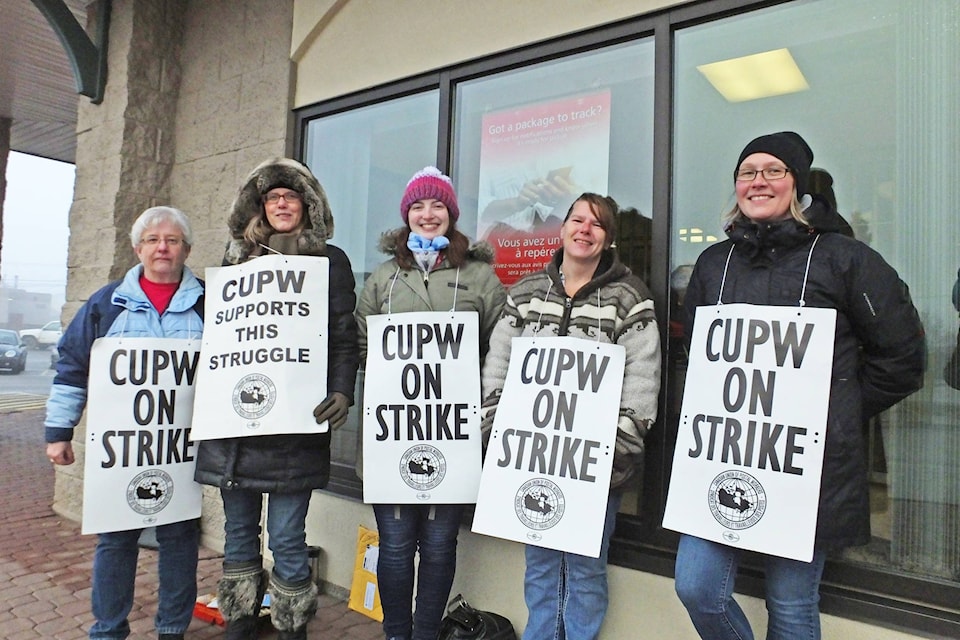Last Friday, Smithers joined more than 150 communities that have experienced Canada Post workers walking out on strike since Oct. 22.
There are some designated workers who will be available for things like pension cheques and taking care of livestock — everything from bees to chickens are shipped by mail.
“Canada Post has one of the worst health and safety records out of all the industries,” said employee Leena Plank.
She and her co-workers were standing outside the Smithers office with their signs to bring attention to their concerns.
Top of mind was a work/life balance. Employees want less of a reliance on making them work overtime, especially for door-to-door carriers. While that specific problem is not an issue in Smithers, rural carriers who deliver to group mailboxes outside of town recently won an arbitration decision that they now want to see shown to be true with pay equity.
“Our jobs have been recently assess to be of equal value to a letter carrier. We don’t do exactly the same thing but the general job description would be the same: We do take parcels out; we do take letter mail out; we do the flyers. Except we take it out in our vehicles and we have a much larger route with kilometres,” explained rural carrier Eileen James, who added that most in her position are female as opposed to the more male-dominated letter carriers.
She added the routes have grown from a part-time job many took for supplemental income to a full-time career.
“My route is over 700 addresses,” she said.
Changes in how much parcel delivery is taken on by Canada Post, plus the fact ever more people are ordering everything from electronics to cannabis online, means James has a lot more to do than just two years ago.
“I went from 33 [parcels to homes per week] on average to over 100 now,” she said, adding its about 100 per day to the community mailboxes. ”That adds two hours onto my day. My route is assessed at seven-and-a-half hours. I’m paid by the day. What we’re looking at is over burdening. We are told to be out there until our day’s done. Christmas time we all know the volumes are extremely high, so we’re out there working with out little head lamps on out on the back roads by ourselves.
“I have no cell service in some of my areas, so it stresses you out because you’re working against the weather, you’re working against the parcel volumes. You basically have not a very good home life because you come home and you’re so tired and you’re stressed — it takes a toll on you mentally as well as physically.”
She said an eight-hour day is what she wants to work and get paid for.
“We’d like to create more jobs. Get another person in here to take over the town,” said James, who said she loves her job otherwise.
The union is also taking the chance during negotiations to make suggestions on how Canada Post can move into the future, presenting its information at deliveringcommunitypower.ca. Ideas include having electric vehicles and charging stations so that workers like James can use instead of their own vehicles.
Plank also said she wanted to see banking brought back to the post office plus bring in internet services.
“A wonderful thing for northern communities … because we do have the largest amount of buildings — even more than Tim Hortons — in all of Canada,” said Plank.
Plank and James both said they hope negotiations reach a conclusion soon so that strike action would not affect the Bulkley Valley again.
